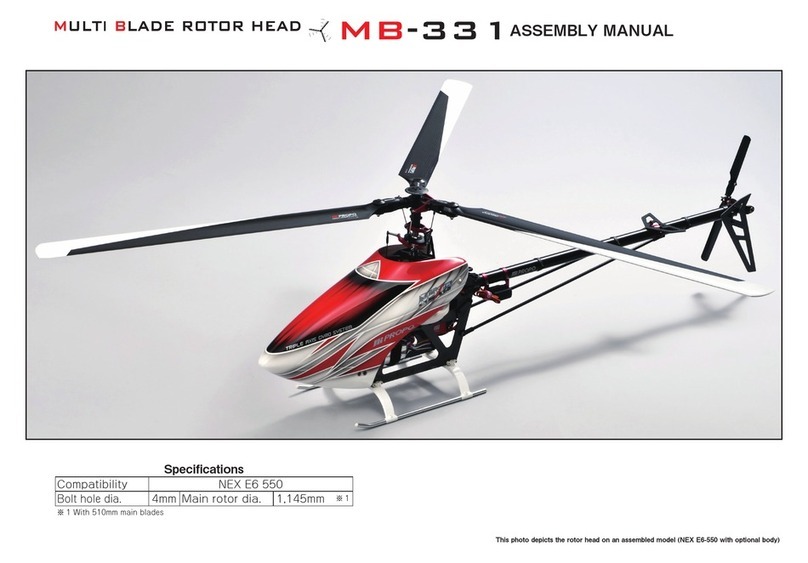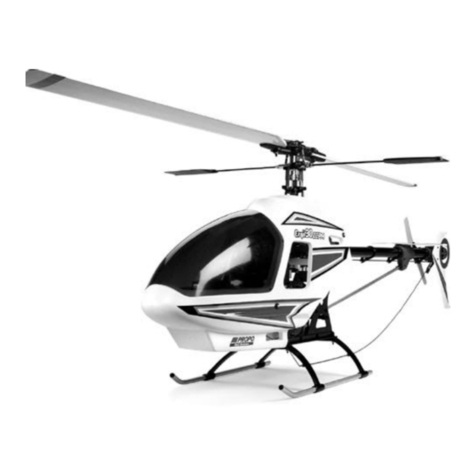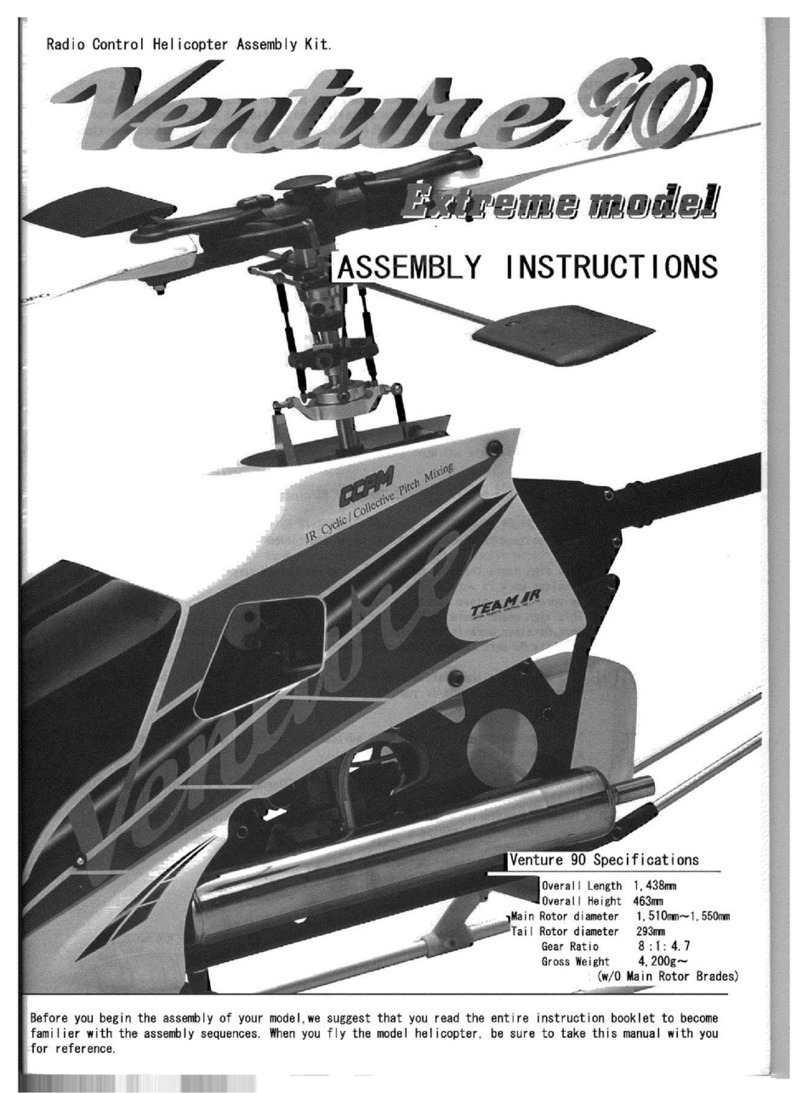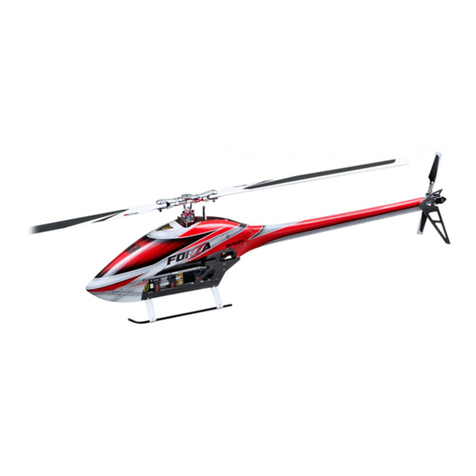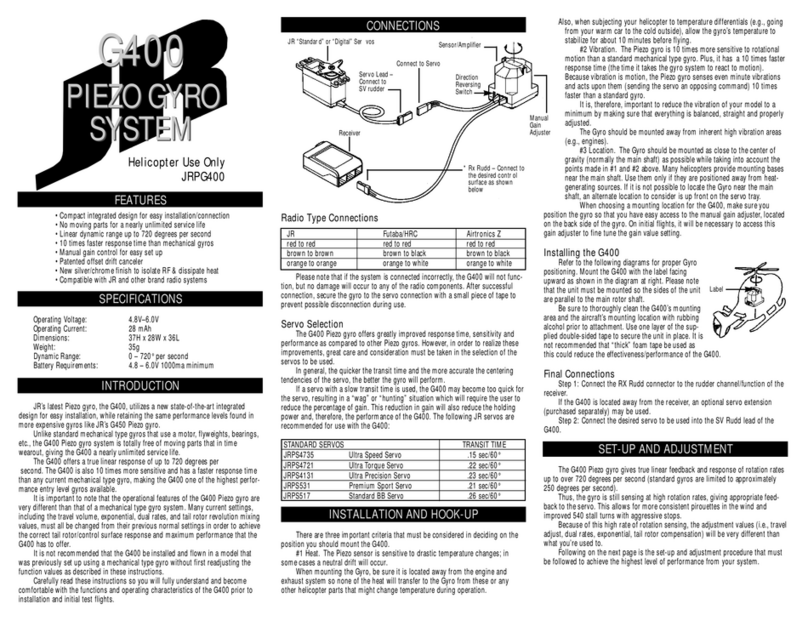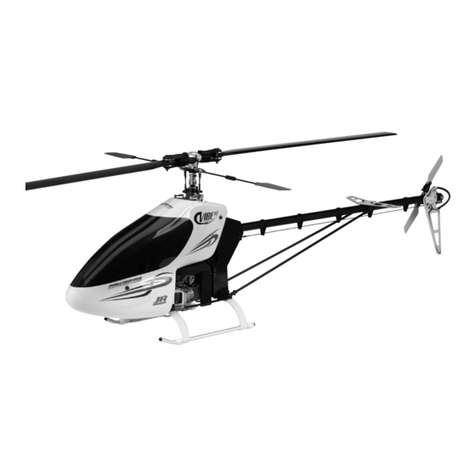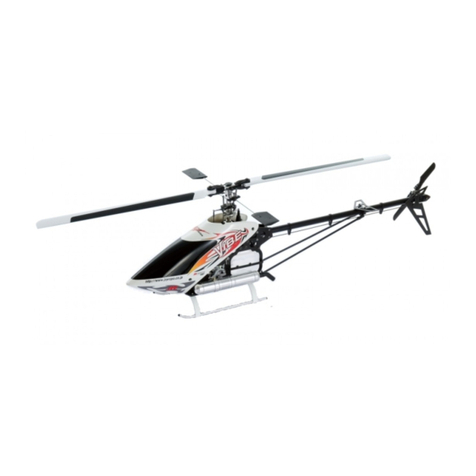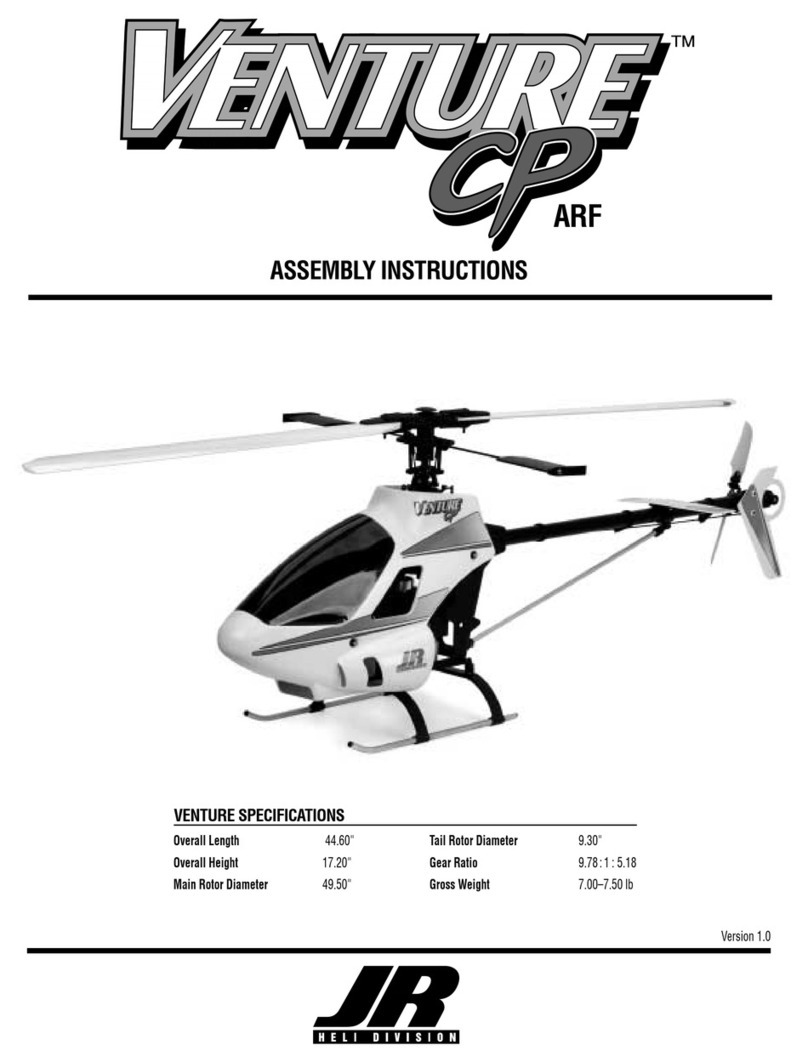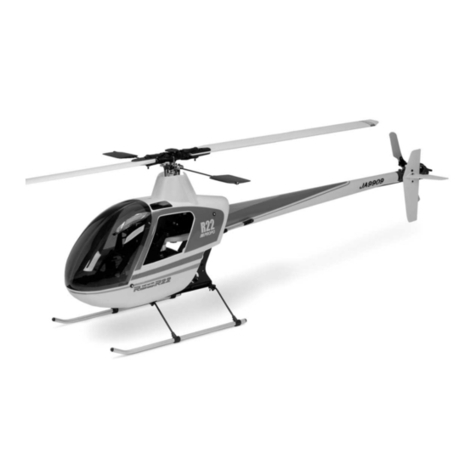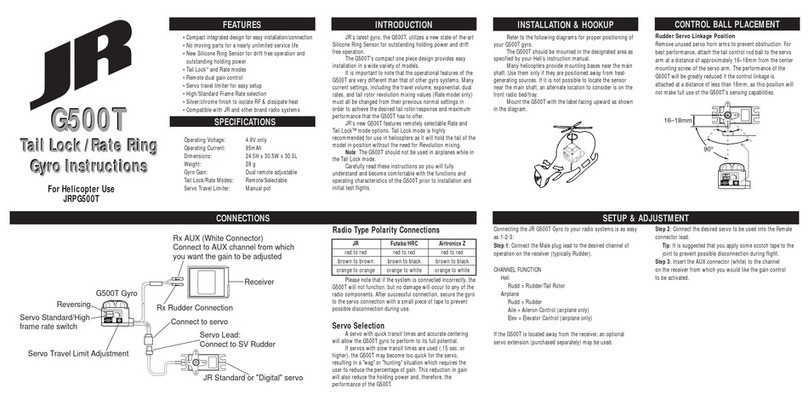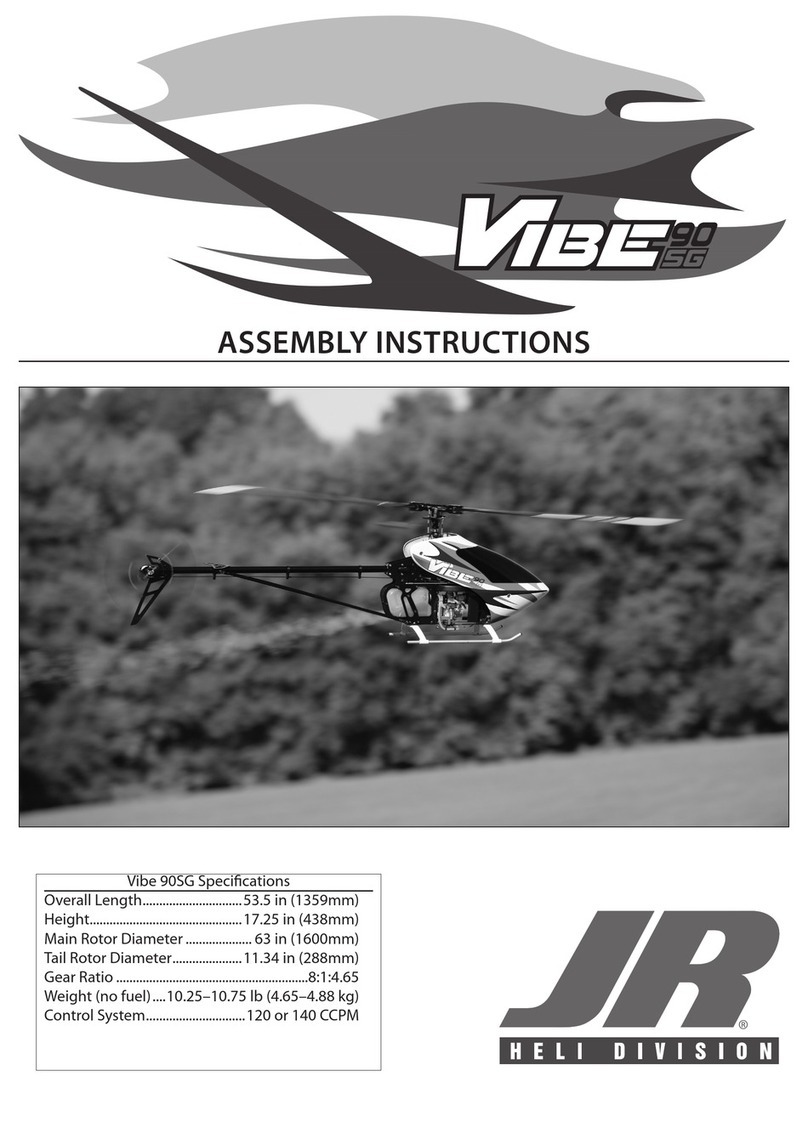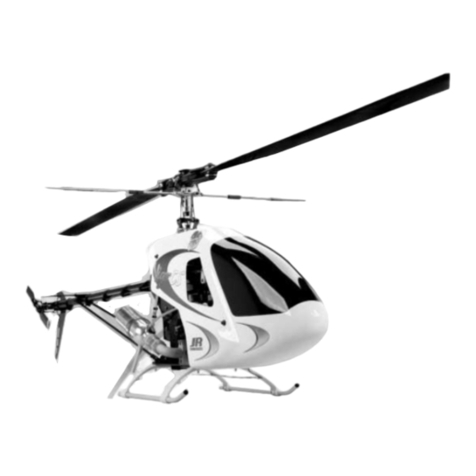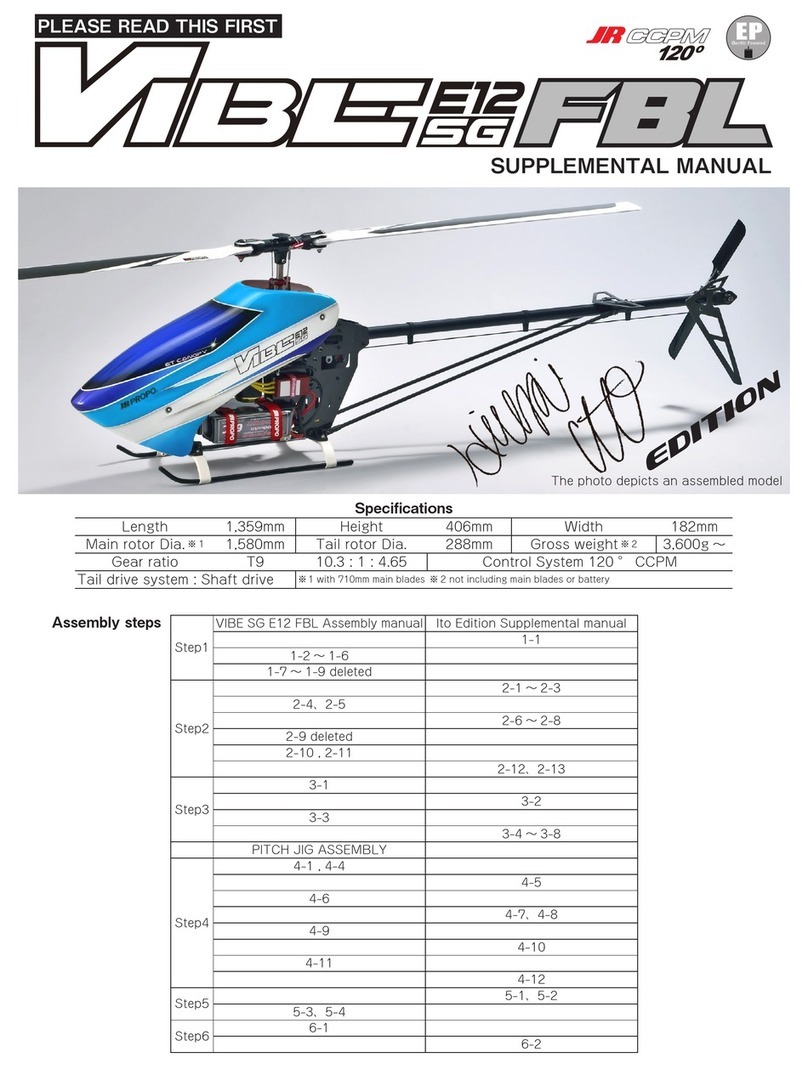3
INTRODUCTION
Congratulations on your purchase of the JR Voyager E Electric Heli.
This model has been designed using the latest in state-of-the-art
design technology.
To achieve the best performance and reliability from this model,
please read through these instructions carefully so you become familiar
with the contents of this kit before assembly.
JR CCPM
To take the electric heli designs to the next level, JR’s designers
turned to CCPM (Cyclic/Collective Pitch Mixing). CCPM is a unique con-
trol system that mounts three servos below the swashplate with short,
straight linkages directly to the swashplate at 120-degree intervals. With
CCPM, complex collective and cyclic mixing is accomplished electronically
rather than mechanically. As a result, many parts are eliminated, along
with excessive control system play, not to mention quicker building and
lower maintenance.
What’s more, you get more servo power from CCPM. That’s because
instead of one servo moving the collective, you now have three. Instead of
one servo moving the cyclic, you have two.
Before you begin the assembly of your Voyager E, we suggest that
you first review the entire instruction manual to become familiar with the
assembly sequences and parts layout.
WARNING
The radio-controlled model helicopter contained in this kit is not a
toy, but a sophisticated piece of equipment. This product is not recom-
mended for use by children. Radio-controlled models such as this are
capable of causing both property damage and/or bodily harm to both the
operator/assembler and/or spectator if not properly assembled and operat-
ed. Horizon Hobby, Inc. assumes no liability for damage that could occur
from the assembly and/or use/misuse of this product.
Although the Voyager E is powered by a quiet, smooth-running elec-
tric motor, it should be assembled and operated with the same care as its
larger glow engine counterparts. When operating your Voyager E, please
exercise caution and safety.
Becoming a successful RC helicopter pilots takes many hours of
preparation and practice. When watching an experienced RC helicopter
pilot flying, it may appear that they are very easy to fly, when in reality it
will take many hours to develop these flying skills.
Please understand that it requires hours of practice to master the art
of RC helicopter flying. On initial flights with your Voyager E, please begin
by attempting simple hovering maneuvers only until you become comfort-
able with the operation of this model. If possible, please seek help from an
experienced RC heli pilot for guidance. With a little time and patience, you
will be able to achieve the full satisfaction of RC helicopter flying.
USE SAFETY AND CAUTION WHEN OPERATING
An electric-powered heli is different from a conventional glow-pow-
ered model in that it can possibly activate the motor as soon as the NiCad
battery is connected if the proper procedures and adjustments have not
been followed.
Please follow the connection and adjustment instructions carefully
during assembly. Use caution and care when handling the NiCad battery to
avoid and prevent any possibility of reverse polarity or shorting, as dam-
age to the electronic equipment can occur.
AMA INFORMATION
We strongly encourage all prospective and current R/C aircraft pilots
to join the Academy of Model Aeronautics. The AMA is a nonprofit organi-
zation that provides services to model aircraft pilots. As an AMA member,
you will receive a monthly magazine entitled Model Aviation, as well as a
liability insurance plan to cover against possible accident or injury. All
AMA charter aircraft clubs require individuals to hold a current AMA sport-
ing license prior to operation of their models. For further information, con-
tact the AMA at:
Academy of Model Aeronautics
5151 East Memorial Drive
Muncie, IN 47302
(317) 287-1256
PREASSEMBLY INFORMATION
When first opening your Voyager E kit, you will notice that all of the
parts are packaged and numbered to coordinate with the assembly step
numbers of this instruction manual.
All small hardware (nuts, bolts, washers, etc.) for each step are pack-
aged separately within the main parts bags. When beginning a section, you
will need to open only the bag with the corresponding number to the sec-
tion you are about to start. It is suggested that you place all of the hard-
ware in an open container (e.g., coffee can) during assembly so as not to
lose any of the small parts. It may also be helpful to familiarize yourself
with the various sizes of screws, bolts, nuts, etc., as illustrated in the
appropriate assembly section before you begin assembly. In most cases, at
the end of each assembly section, there should be no parts remaining.
Great care has been taken in filling the bags with the correct quantity
of parts and hardware for each section. However, occasional mistakes hap-
pen. In the event that you find a parts shortage or are in need of technical
assistance, please contact your local JR heli division parts dealer or con-
tact the Horizon Service Center directly.
Horizon Service Center
4105 Fieldstone Road
Champaign, IL 61822
(217) 355-9511 (9 a.m. to 5 p.m. CST)






